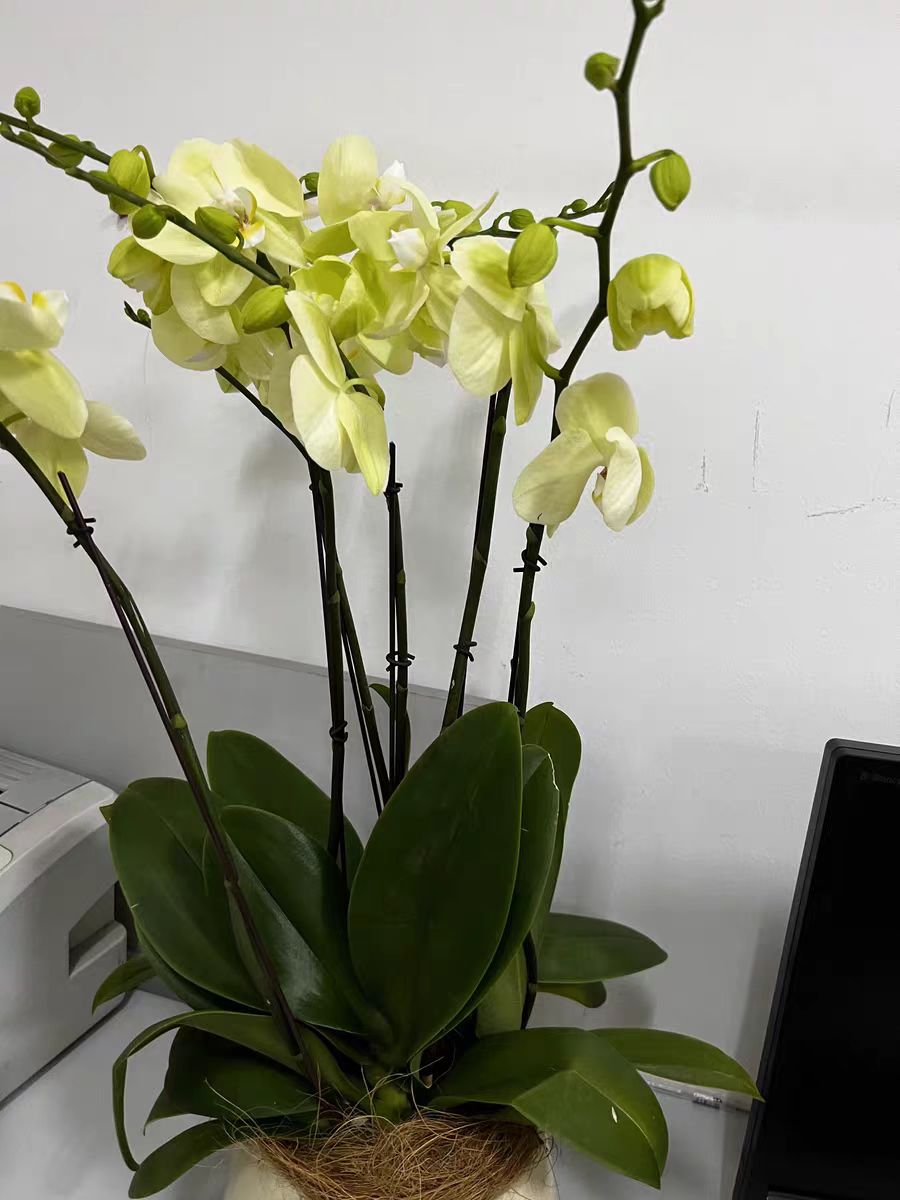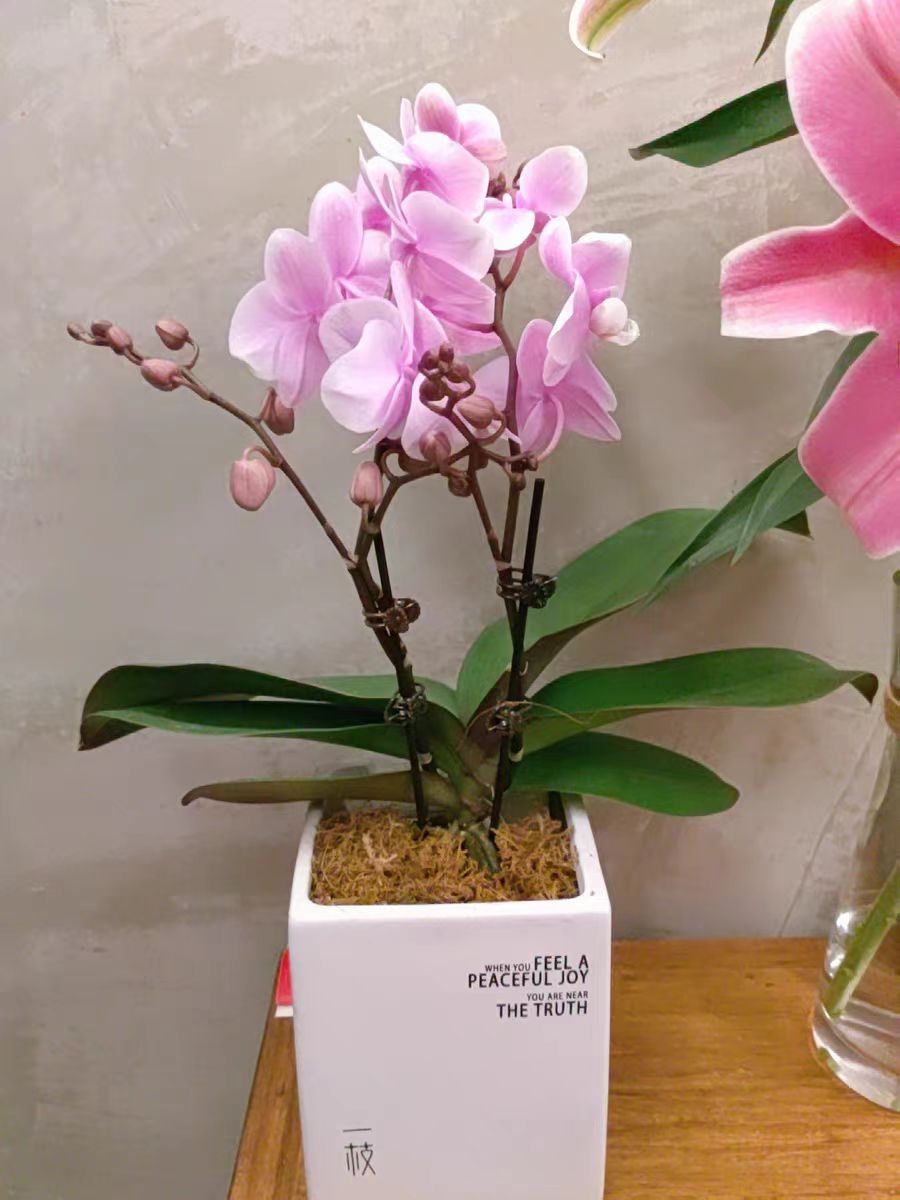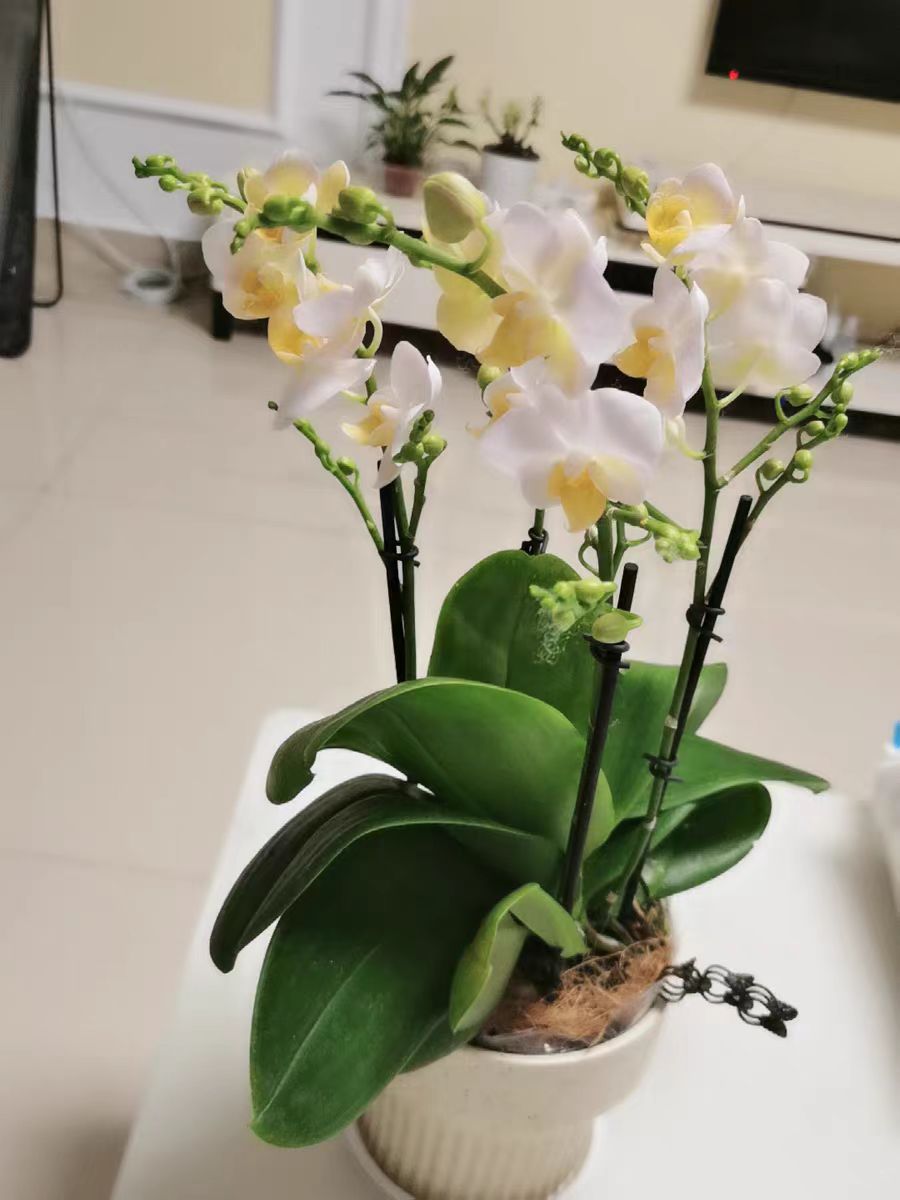Phalaenopsis orchids are a popular choice for indoor flower cultivation. However, when the flower stalks of the carefully cared-for Phalaenopsis orchids turn dry and yellow, it really makes people feel distressed. Understanding the reasons behind it and finding solutions are the keys to bringing the Phalaenopsis orchids back to life.
Reasons for the dry flower stalk:
Natural aging: After completing a growth cycle, the flower stalks of Phalaenopsis orchids will naturally age and dry out, which is a normal physiological phenomenon. Generally speaking, from the blooming of the flowers to the drying of the flower stalks, the entire flowering period may last for several months. When the flowering period ends, the flower stalks will gradually lose their vitality.
Improper maintenance: Firstly, the imbalance of water management is a common problem. Excessive watering can lead to root hypoxia and rot, making it impossible for the roots to supply water and nutrients to the flower stalks normally, and the flower stalks will dry out. If watering is too little, the whole plant will be short of water, and the flower stalks will also dry out due to insufficient water supply. Secondly, the light is not suitable. Phalaenopsis orchids prefer diffused light. If they are exposed to direct strong light for a long time, the flower stalks will be burned, and the water will be lost rapidly, and then dry out. If the light is seriously insufficient, photosynthesis cannot proceed normally, the plant will grow poorly, and the flower stalks will turn yellow and dry out. Thirdly, the fertilization is unreasonable. Excessive fertilization will cause fertilizer damage and damage the roots; insufficient fertilization will lead to a lack of nutrients in the plant, both of which will cause the flower stalks to be unable to maintain normal growth and dry out.
Invasion of pests and diseases: For example, stem rot is a disease caused by fungi. After being infected, the base of the flower stalk will become soft, change color, and gradually dry out. There are also pests such as thrips, which will suck the sap in the flower stalks, causing the flower stalks to be damaged and dry out.
Solutions:
For natural aging: When it is confirmed that the flower stalks are dry due to natural aging, you can use a disinfected pair of scissors to cut off the dry part at 1 - 2 nodes at the base of the flower stalk to reduce nutrient consumption, reserve energy for the plant, and help it bloom next time.
Correct maintenance problems: Adjust water management. Before watering, insert your finger about 2 - 3 centimeters into the planting medium. If it feels dry, then water. Water thoroughly each time to ensure that water flows out from the bottom of the pot. In terms of light, place the Phalaenopsis orchid in a position with bright diffused light. Use a sunshade net or curtain to block the strong light in summer, and appropriately increase the light time in winter. Follow the principle of "applying thin fertilizers frequently" for fertilization. Apply a thin liquid fertilizer once every 1 - 2 weeks during the growth season, and adjust the type of fertilizer according to the growth stage of the plant.
Prevent and control pests and diseases: For stem rot, once it is found, immediately isolate the diseased plant, cut off the diseased part, and apply a fungicide such as carbendazim to the wound, and replace the planting medium with clean ones. For pests such as thrips, you can use insecticides such as imidacloprid for spray control. Spray once every 7 - 10 days for 2 - 3 consecutive times.
The dry flower stalks of Phalaenopsis orchids are not an insoluble problem. As long as you patiently analyze the reasons and take targeted measures, you can make the Phalaenopsis orchids recover their health and bloom beautiful flowers again.
What's wrong with the dry flower stalk of a Phalaenopsis orchid?

Share with
Tagged in :



Leave a Reply